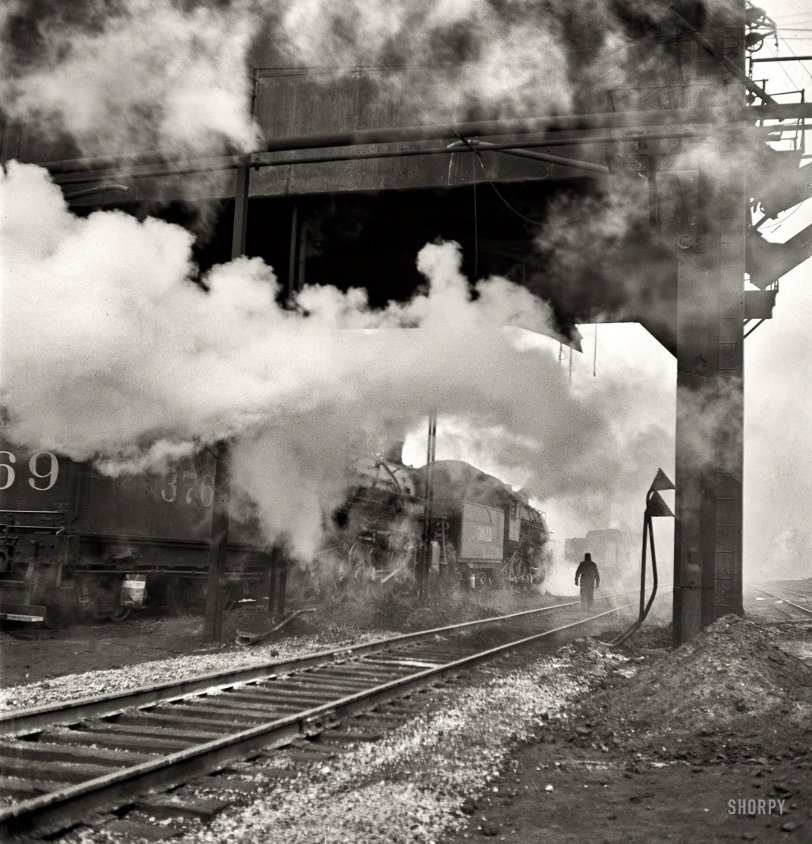


Framed or unframed, desk size to sofa size, printed by us in Arizona and Alabama since 2007. Explore now.
Shorpy is funded by you. Patreon contributors get an ad-free experience.
Learn more.

- Baldwin 62303
- Baldwin VO-1000
- Cold
- No expense spared
- Tough Guys
- Lost in Toyland
- And without gloves
- If I were a blindfolded time traveler
- Smoke Consumer Also Cooks
- Oh that stove!
- Possibly still there?
- What?!?
- $100 Reward
- Freeze Frame
- Texas Flyer wanted
- Just a Year Too Soon
- WWII -- Replacing men with women at the railroad crossing.
- Yes, Icing
- You kids drive me nuts!
- NOT An Easy Job
- I wonder
- Just add window boxes
- Icing Platform?
- Indiana Harbor Belt abides
- Freezing haze
- Corrections (for those who care)
- C&NW at Nelson
- Fallen Flags
- A dangerous job made worse
- Water Stop
Print Emporium
Coal, Water, Sand: 1942

November 1942. "Chicago. Locomotives loading up with coal, water and sand at an Illinois Central Railroad yard before going out on the road." Medium-format negative by Jack Delano for the Office of War Information. View full size.
Sand
I was a brakeman on the Penn Central some years ago and we often switched out a couple of pipe yards that were at the bottom of a hill. If it was early morning with dewy tracks, we would sand going down so we could make it back to the top of the hill.
Yes, sand!
The coal fuels the fire that makes steam from the water, and the sand, when dropped on the rail, gives the engine more traction. Most useful when the rail is wet, covered with snow/ice/leaves. Sand actually is essential to get over the railroad.
Legend has it an old B&ORR helper engineer dreamed up the idea circa 1840s, and rigged a box up on his locomotive with pipes to the rail. It worked so well the RR's quickly adopted it. He shoulda patented his invention. The newest computerized locos today still have sand boxes with pipes to the rails.
























On Shorpy:
Today’s Top 5